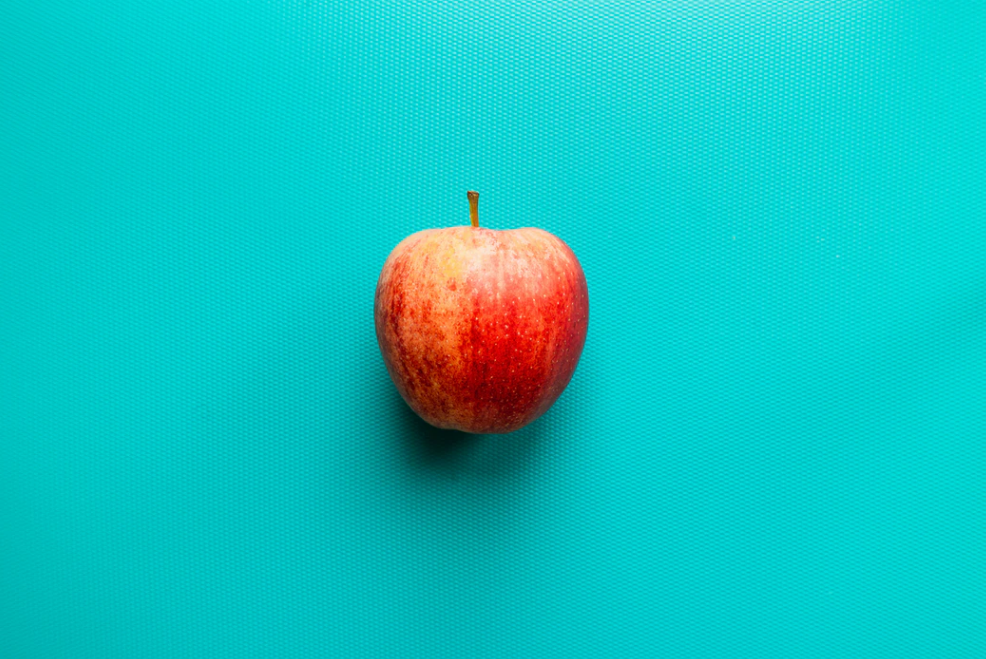
Everyone knows that eating fruits and vegetables is good for your health, but how much can you eat to achieve the best results?

Recently, a study published in the American Heart Association (AHA) journal Circulation found that eating fruits and vegetables has an optimal intake and combination in terms of reducing the risk of disease and prolonging life.
Harvard University: 5 servings of fruits and vegetables a day to prolong life
Researchers from the Harvard School of Public Health have conducted a 30-year study of nearly 2 million adults and found that high intake of fruits and vegetables is associated with a lower risk of death.

In order to determine the best daily intake of fruits and vegetables, the research team first analyzed the data from the American Nurses Health Study (NHS) and the Health Professional Follow-up Study (HPFS), involving 108,735 subjects and a follow-up time of up to 30 year.
At the same time, the researchers also compiled data on fruit and vegetable intake and mortality risk in 26 other studies.
These data covered 1,892,885 participants in 29 countries and regions in North America, South America, Europe, Asia, Africa, and Oceania.
Based on the data of the above 2 million people, after adjusting for the influence of other factors, the researchers found that:
Eating 2 servings of fruits + 3 servings of vegetables per day (80 grams per serving) may be the best dosage and combination to extend life.
Eating more than 5 servings of fruits and vegetables a day does not add any additional benefits.
Compared with those who eat 2 servings of fruits and vegetables a day, those who eat 5 servings of fruits and vegetables a day have a 13% reduction in overall risk of death, a 12% reduction in the risk of death from cardiovascular diseases, a 10% reduction in cancer death risk, and the risk of death due to respiratory diseases. A reduction of 35%.
Not all fruits and vegetables can bring the benefits of reducing the risk of death and prolonging life. Fruit juices and starchy vegetables (such as corn, potatoes) have not been found to be associated with these benefits.
Green leafy vegetables (such as spinach, lettuce, and kale), and fruits and vegetables rich in β-carotene and vitamin C (such as citrus fruits, berries, and carrots) have all been shown to reduce the risk of disease and death.
In general, this large-scale study determined the optimal daily intake of fruits and vegetables, that is, eating 2 servings of fruits and 3 servings of vegetables (80 grams each) per day, which is the most effective in preventing diseases, reducing the risk of death and prolonging life.
If you don’t eat enough fruits and vegetables, your body has 5 major changes
In 2019, the American Academy of Nutrition released a global diet research report, which mentioned that nearly 3 million people in the world may die of heart disease and stroke because of not eating enough fruits and vegetables every year.

If you eat less fruits and vegetables, “becoming ugly” may only be the first step:
1. Damage to the skin
A study published in the journal Nutrients found that women who consume less fruits and vegetables have a 47% increased risk of seborrheic dermatitis.
2. Weight gain
The American health website Livestrong published an article that adding vegetables and fruits to the diet is related to weight loss.
The reason may be that fruits and vegetables are high in fiber and water content, and low in calories, which can keep you full without providing too much calories.
3. Affects heart health
Research published in the medical journal International Journal of Molecular Science shows that eating more plant foods such as fruits and vegetables in your diet can reduce the risk of heart disease.
Fruits and vegetables contain special nutrients called “phytochemicals” that help reduce inflammation throughout the body. Studies have pointed out that fruits and vegetables help fight this chronic inflammation and are related to the prevention of cardiovascular disease.
4. Gastrointestinal disorders
The increase in the number and types of bacteria in the intestine is vital to the immune system. According to the Harvard School of Public Health, fiber seems to be the number one indicator of intestinal diversity.
Fiber is a kind of carbohydrate in plant foods, which helps promote the growth of beneficial bacteria in the intestines.
5. Increased risk of diabetes
A study published in the British Medical Journal found that people with the highest levels of vitamin C in their bodies have the lowest risk of developing type 2 diabetes.
Studies have pointed out that the high fiber content of fruits and vegetables helps regulate blood sugar. Eating more foods rich in vitamin C will also reduce your intake of other sugary foods.
A set of keywords teaches you to eat the right fruits and vegetables
How should we eat fruits and vegetables scientifically in life? The following keywords may help you.

Weight
One catty of vegetables + half a catty of fruits a day
The daily vegetable intake per person is 300 to 500 grams (the weight before cooking), of which dark vegetables account for 1/2;
The fruit intake is 200 to 350 grams per day, which is roughly equivalent to an apple and an orange.
In layman’s terms, it means one catty of vegetables and half a catty of fruits every day.
This amount is good for preventing coronary heart disease, stroke, diabetes, etc., and it is also good for bone health.
To eat vegetables for lunch or dinner, you can follow the “321 pattern.”
“3” refers to 3 taels (150 grams) of leafy vegetables, mainly green leafy vegetables, including pakchoi, rape, cabbage, spinach, amaranth, chrysanthemum, etc.;
“2” refers to 2 taels (100 grams) of any other vegetables, but does not include potatoes, yams, lotus roots, etc.;
“1” refers to 1 tael (50 grams) of bacteria and algae food, including shiitake mushrooms, enoki mushrooms, kelp, seaweed, fungus, etc.
It can be a family unit. For example, a family of three can buy about 3 catties of vegetables and 1 catty and a half of fruits a day, and eat them in one day.
Species
≥5 kinds of vegetables and ≥2 kinds of fruits every day
In terms of types, you should eat at least 5 kinds of vegetables + 2 kinds of fruits every day.
Cruciferous vegetables (such as cabbage, cauliflower, cabbage) are rich in plant compounds, such as aromatic isothiocyanates, which are anti-cancer ingredients in the form of glycosides.
Bacteria and algae (such as Flammulina velutipes, shiitake mushroom, fungus, seaweed) contain minerals such as protein, polysaccharides, carotene, iron, zinc, and selenium.
In marine bacteria and algae (such as seaweed and kelp), the content of iodine is also high.
The lotus root, yam and other starches have a lot of starch content. If you eat this kind of vegetables, you should appropriately reduce the staple food to avoid excessive energy intake.

Color
The richer the better
Whether you eat vegetables or fruits, the color should be as rich as possible.
Generally speaking, the vegetables with the highest comprehensive nutritional value are dark green leafy vegetables such as spinach, pakchoi, and chrysanthemum chrysanthemum, which should account for half of the daily vegetable intake.
The other half should be reserved for vegetables of other colors, such as yellow carrots, red tomatoes, purple cabbage, etc. The more the color, the more nutritious the intake.
In addition, dark-colored vegetables (such as green, red, purple, and yellow, etc.) have higher β-carotene, vitamin B2, and vitamin C content than light-colored vegetables.
Source
First choice local and seasonal fruits and vegetables
In the same kind of fruits and vegetables, local and seasonal products are often the best.
These local products do not need to be transported over long distances and do not need to be kept fresh; in addition, these products can be harvested after they reach their optimal maturity, with better quality and taste.
It is recommended not to pursue those untimely fruits and vegetables, for example, watermelon is not necessarily eaten in spring, it is best to wait until July to eat.
Cooking
Nutrition loss needs to be reduced
Many vitamins and minerals in vegetables are water-soluble and are easily lost during processing.
Washing and cutting, stir-frying quickly, eating fresh, adding vinegar, thickening before serving, less beating fruit and vegetable juices, and eating raw vegetables appropriately, etc., can reduce nutrient loss.
Fruits and vegetables have their own advantages in nutrition and cannot be substituted for each other. You should take in as many fruits and vegetables of different colors as possible, and have fruits every day and vegetables every day.
Comments